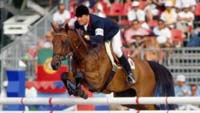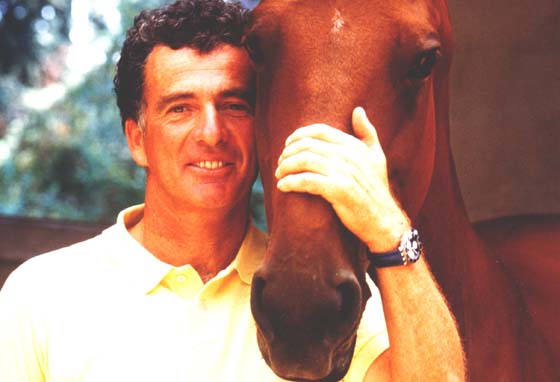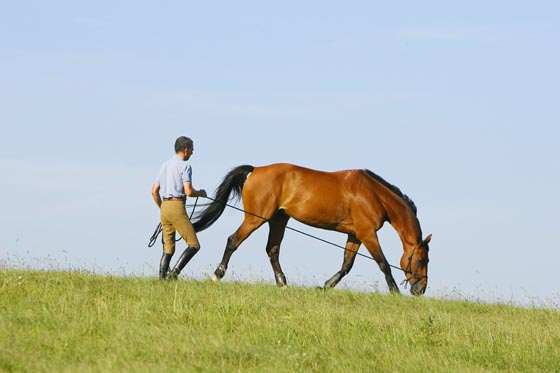Riding outdoors
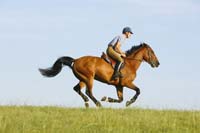
Riding outdoors is ideal for getting a horse fit. It will be all the more effective if one has the opportunity to ride over hilly ground. The horse will be more receptive, more joyful and its body will express itself more naturally (...)
Riding outdoors is ideal for getting a horse fit. It will be all the more effective if one has the opportunity to ride over hilly ground. The horse will be more receptive, more joyful and its body will express itself more naturally.
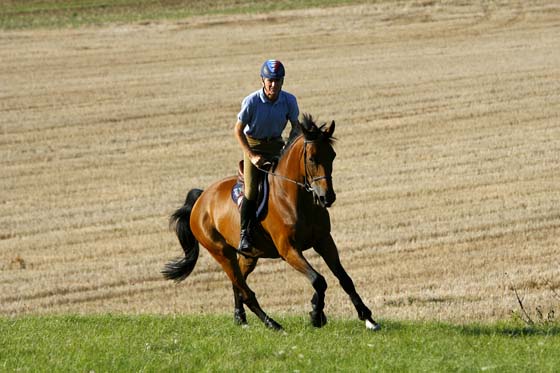
I remember one day that a girl who rides with me saw me cantering around in a wet field, and exclaimed: «But it’s much too dangerous to ride on that ground without studs! « Many riders really believe that horses slip and fall on wet grass. In the wild, however, horses live out and never fall when turning at a canter in a field!
Once again, I am reminded of Belle Bleue, the mare with all those bad experiences, with a hot temperament and hard to control. I only managed to canter in a circle calmly after a year’s work. One night, I went to canter in the icy arena. The ground was like a skating rink. Belle Bleue knew it.
All of a sudden, she became very receptive to my requests and paid great attention to all her movements. She was never as pleasant to ride as that day! When un-mounted, horses are quite capable of keeping their balance; it is the rider’s rigidity that blocks the natural functioning of their movements and unbalances them to the extent of causing them to fall.
Riding outdoors is also ideal for improving the horse’s endurance - progressively of course. A competition horse must be capable of trotting for 30 to 60 minutes, on the clock. My eventing experience has taught me what it takes to get horses fit. To do this, it is necessary to start by analysing the initial situation to establish a training programme lasting at least one month. During this period, I usually alternate flat work and jumping, with two or three weekly sessions trotting out, if possible going up and down hills. The aim is to increase the horse’s breathing and endurance capacities.
I remember a CSIO horse I had been given to ride a few years ago. When it arrived in my yard, it had no physical condition at all, it roared and got tired very quickly. I decided to set up a serious program for getting it fit again.
After a month’s work, its breathing capacity had changed totally. It could canter for half an hour, and then later for three quarters of an hour, at a speed of 350 metres a minute. It no longer coughed and its roaring was no longer a problem when jumping three rounds in a Grand Prix at the end of a CSIO.
Bear in mind that the fitter the horse, the less sensitive it will be to illnesses, lameness or any other problems. I am aware I have said this before, but at the cost of repeating myself, once again remember that more horses are ill or lame due to a lack of physical activity rather than from being over-worked. Pay attention, however, to irregular, unsuitable training, or bad preparation. As far as I am concerned, my horses go out and work every day, even if they are stiff or tired. Of course warming up periods are extended, but under no circumstances do they stay in their boxes.

